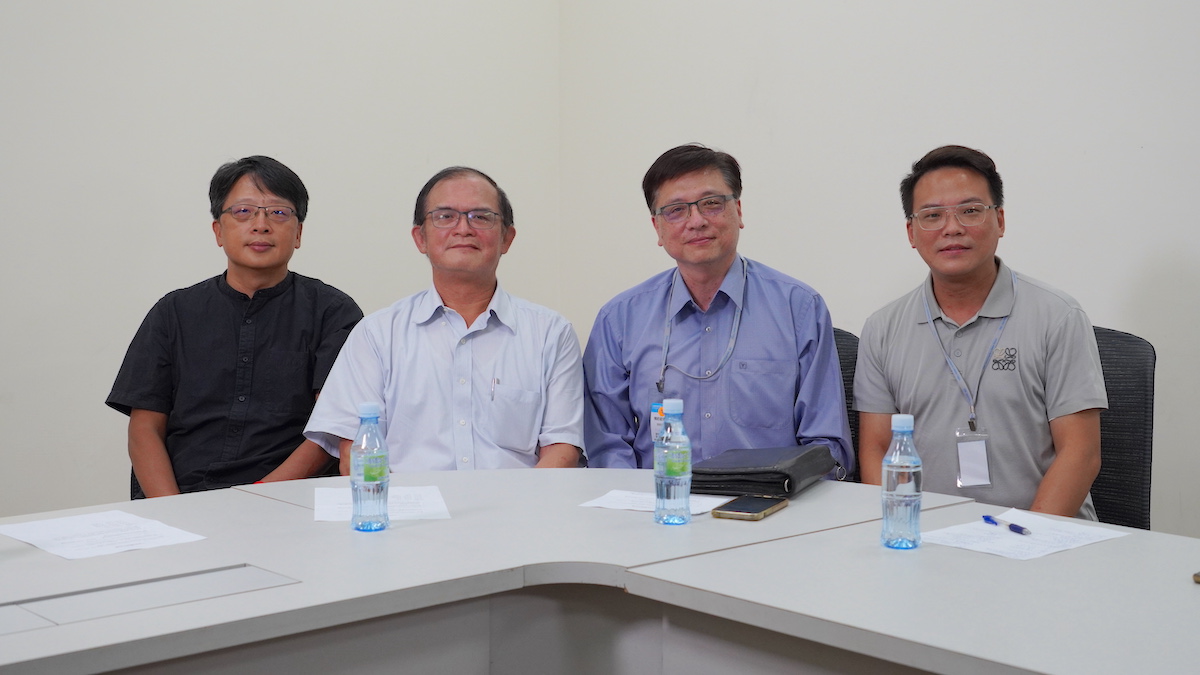Since the “Unmanned vehicle sandbox program” was released for applications by the MoEA about 3 years ago, the first unit qualified for the road test license plate for autonomous driving is Mechanical and Mechatronics Systems Research Labs, ITRI (MMSRL). Since then, the division of intelligent vehicle, MMSRL reached enormous achievement in the development and application of autonomous driving technology; Either in Nanliao, Hsinchu, or Shuinan, Taichung, in the process of continuously conducting road tests, the MMSRL had proven that their technology is ready for commercialization. In the morning of 20th July, the editors of Auto Future came to ITRI, which located in Zhudong Township, Hsinchu County, to interview Dr. Jwu-Sheng Hu, the Senior VP and the founder of the autonomous driving technology of ITRI, and Dr. Chieh-Chih Wang, the CDO of the MMSRL who is actually in charge of the development, to generally understand the current achievement and the direction of future development about the MMSRL.

Five years ago, Dr. Hu invited Dr. Huang coming back to Taiwan from Apple Company in USA to begin the planning of the development of L4 autonomous driving technology. At the time that the trend of the development of autonomous driving just begun around the world, apart from Google’s Waymo that had higher level of technology, other startup companies and R&D units had only slight difference between each other. The MMSRL prioritized the commercialization in the design process then developed the “adjustable” autonomous driving system that can be adapted to local market demands and be more user-friendly by considering different type of vehicles (SUVs, light trucks, heavy duty trucks…, the time and distance needed for acceleration and deceleration, the turning radius and radius difference between inner wheels are different by types) and different type of driving habits (e.g. Taiwanese has faster lane changing move than Europeans and Americans; or the “Full Stop” signs often appear on the roads of Europe or America that cars must be completely stop then start moving forward, but cars mostly pass the junctions slowly in this case in Taiwan). In the constructing process of the decision-making system of their autonomous driving vehicles, the mathematical model of the so-called “Behavior Tree” can input AI learning parameters that have abundant experience and more comprehensive consideration than human drivers had to make the most appropriate decision at that moment. The R&D competitiveness of the MMSRL already owns the leading edge in Taiwan AV technology, and will then march forward to the world stage. The features are listed below…
- It can operate at the car speed of up to 60km/h, and it can utilize the onboard sensor components including LiDARs and radars plus the algorithms designed by MMSRL to recognize the surroundings to drive in shaded roads including tunnels that has no GPS signal received for HD-map comparison.
- It can operate in normal roads with people and cars mixed traffic condition (They are currently cooperating with HCT in the logistics by autonomous driving trucks to optimize the cargo delivery flow that can save time, fuel cost, and labors in multi-point mesh delivery in the future).
- It can operate in all weather conditions (for logistics industry that can conduct delivery in the midnight or bad weathers, it will generate more benefits from the high utilization rate.).
- It can complete indoor or outdoor parking maneuver without positioning via parking spots or cars nearby. Therefore, it can successfully complete the fully-autonomous driving in the whole journey in the “Last Mile” that can end up with the accurate position of the destination.
Two years ago, the progress of the development of MMSRL has been favored by a Japanese carmaker, and with the participation of related departments from the government, they officially signed the agreement of the cooperation of development of autonomous driving technology, and the progress goes smoothly that the timetable of commercialization can be expected to be finalized. In addition, the operation of shuttle buses for personnel in Taoyuan Airport, the demonstration of autonomous driving technology on 35-ton trucks in Australia, are both currently on the progress. The MMSRL derived a “black technology” from the development of autonomous driving - the technology of the construction of HD-map. The MMSRL utilizes efficient and precise RTK (Real Time Kinematic) combined with in-house algorithm to discuss with the Department of Land Administration, Ministry of Interior, about the “Digitize Taiwan” – the establishment of the digitalization of streets and geographical environment of Taiwan… It can even compare the accurate position from measuring manhole covers with the underground piping diagram from the government to conduct the construction adjustment or to help the establishment of the roadside electric pole; the ultimate goal of this map is being uploaded to the “cloud” that any cars on the road, roadworks units, the urban planning, or major carmakers that is preparing to introduce autonomous driving vehicles in Taiwan can take whatever they need in this real-time updated cloud HD-map to get services from different aspects. Just like the annotation of the autonomous driving technology of the MMSRL made by Dr.Hu… The purpose of the development of technology is not only to bring value to the industry, but also to the society, and to promote better lives for the general public.